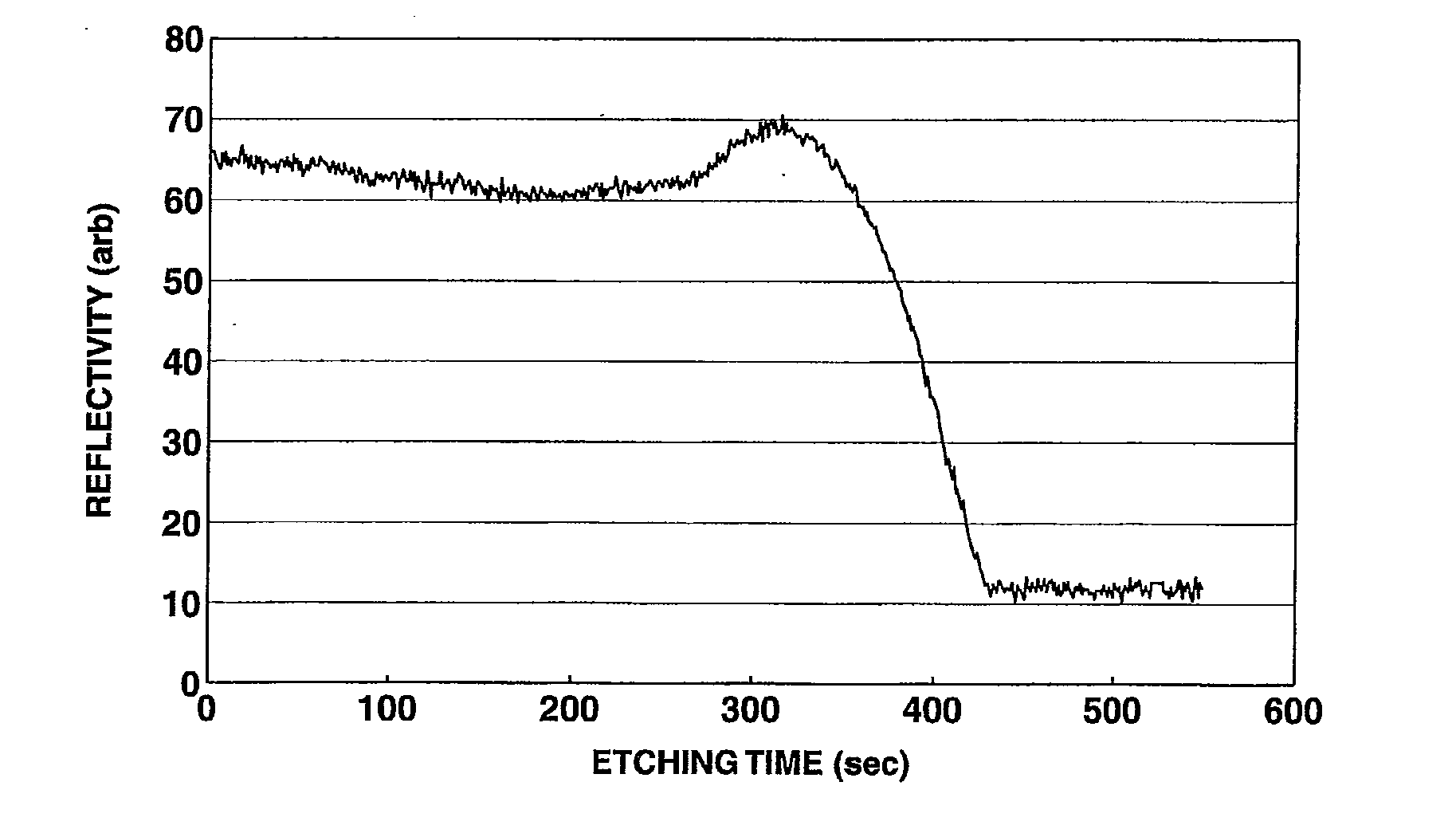Evaluation of etching conditions for pattern-forming film
a pattern-forming film and etching condition technology, applied in the direction of photomechanical treatment originals, semiconductor/solid-state device testing/measurement, instruments, etc., can solve the problems of pattern formation, pattern defects, substantial damage to the etch mask film, etc., to achieve the effect of minimal pattern defects
- Summary
- Abstract
- Description
- Claims
- Application Information
AI Technical Summary
Benefits of technology
Problems solved by technology
Method used
Image
Examples
example 1
[0053]Photomask blank samples were prepared by depositing a light-shielding film of MoSi-based material on a quartz substrate, and depositing a film of chromium-based material thereon as an etch mask film. Specifically, the light-shielding film was composed of MoSiN and the etch mask film was composed of chromium. The deposition time was adjusted such that the light-shielding film had a thickness of 60 nm and the etch mask film had a thickness of 5 nm.
[0054]Using the etching system of FIG. 1, the light-shielding film of MoSi-based material and the etch mask film of chromium-based material thus deposited were subjected to fluorine base dry etching under seven sets of etching conditions A to G. The etching clear time was determined. The set of etching conditions is shown in Table 1.
TABLE 1EtchingGasPowerGas flow rateconditionpressure(W)(sccm)set(mTorr)RF1RF2SF6O2HeA55432518450B5543251845130C55415018450D5543259450E51003251845130F510015018450G51003259450RF1: reactive ion etching (RIE) +...
PUM
 Login to View More
Login to View More Abstract
Description
Claims
Application Information
 Login to View More
Login to View More - R&D
- Intellectual Property
- Life Sciences
- Materials
- Tech Scout
- Unparalleled Data Quality
- Higher Quality Content
- 60% Fewer Hallucinations
Browse by: Latest US Patents, China's latest patents, Technical Efficacy Thesaurus, Application Domain, Technology Topic, Popular Technical Reports.
© 2025 PatSnap. All rights reserved.Legal|Privacy policy|Modern Slavery Act Transparency Statement|Sitemap|About US| Contact US: help@patsnap.com


